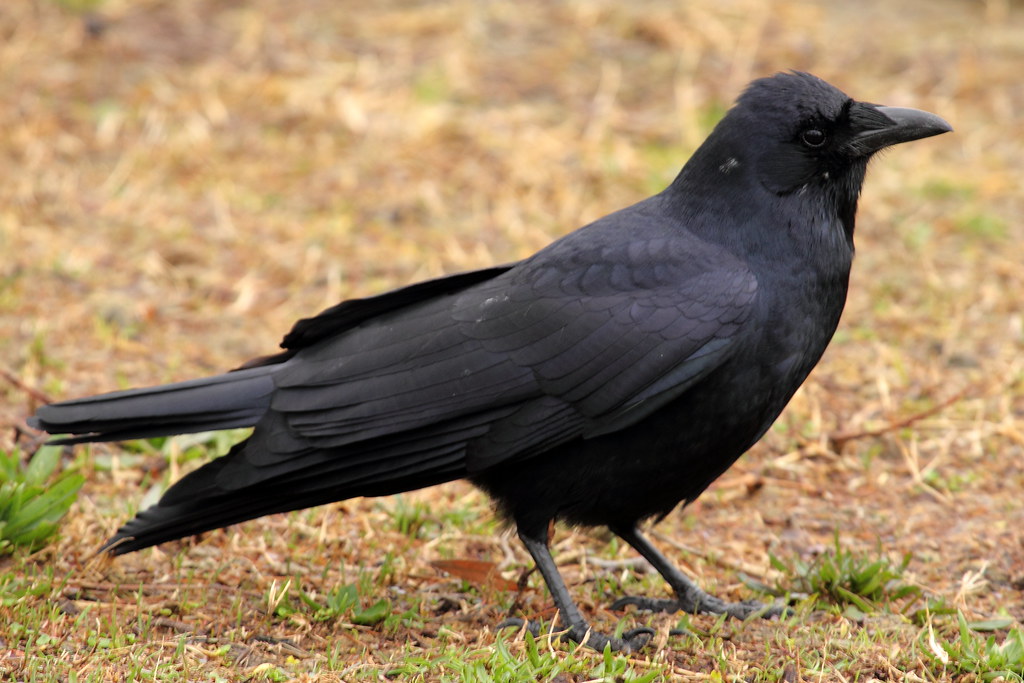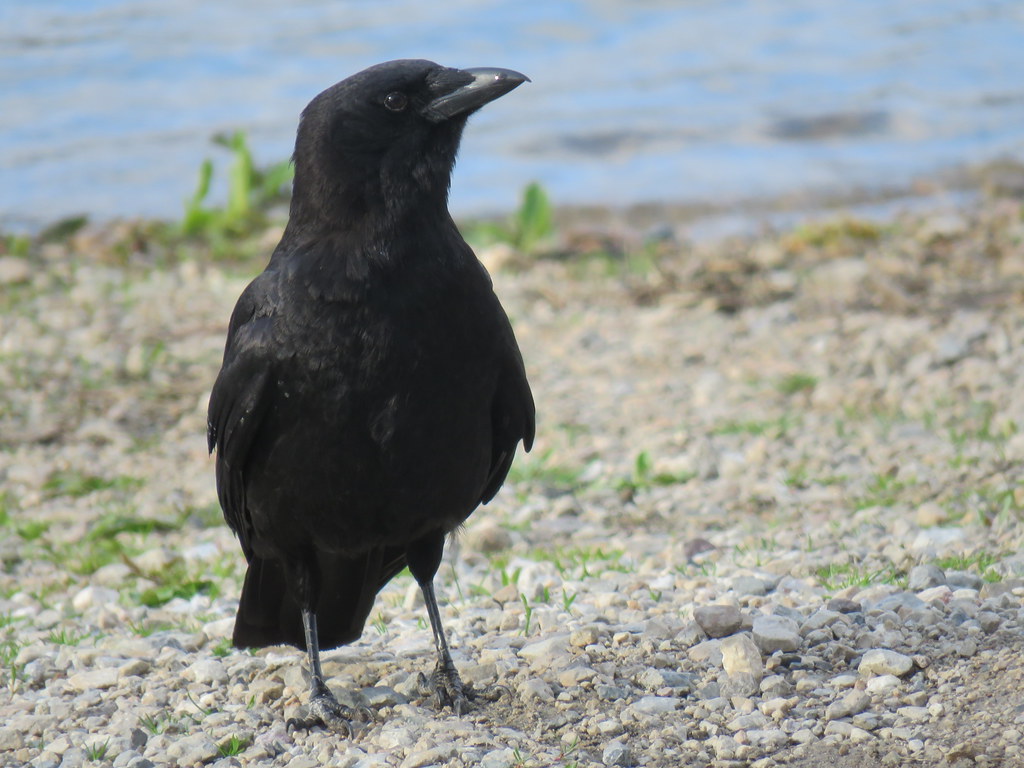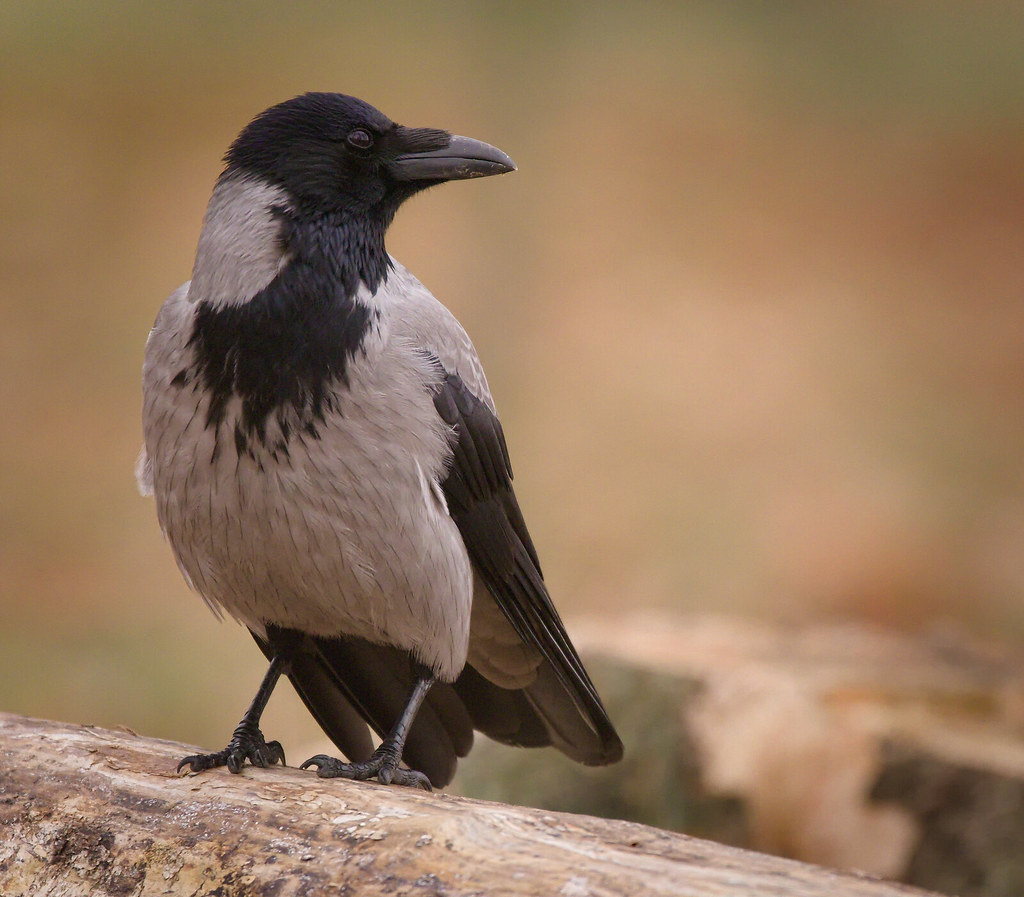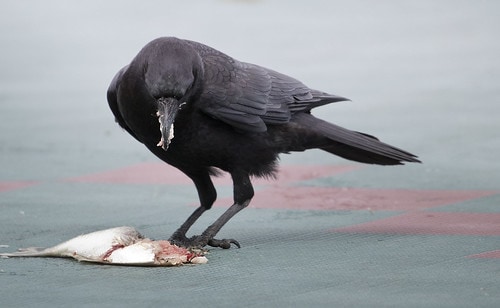Crows are black-feathered birds many are familiar with. You've probably seen one while watching a horror movie or walking down the street. They are intelligent birds known for creating their own tools, playing games, and even recognizing a human's face for years.
What do crows eat? Crows use their smarts for hunting food, they are omnivores that can adapt to most habitats, so they can make the most out of any meal the environment has to offer.
If you want to know how crows can thrive in most habitats, then keep reading below!
What Do Crows In The Wild Eat?
General Diet
Considering that there are around 45 species of crows, and the wilderness has a lot of food options, the crow diet varies from species to species and region to region.
Generally speaking, though, all crows should at least eat the following foods:
Meat-based items
- Small mammals, reptiles, amphibians, and other birds, both alive and as carrion
- Stolen bird's eggs
- Fish, shellfish, and mollusks, such as snails
- Worms, insects, and other invertebrates
Plant-based items
- Seeds, nuts, and grains
- Wild fruits, vegetables, berries, and other plant matter
Crows must have specific preferred foods with all of these various options, right?
Although all crows are omnivores, some crow species lean toward a herbivorous diet, while others are more carnivorous.
Here are six species that can help you fully understand the extent of a crow's diet. You'll want to pay particularly close attention to their feeding habits as a key step for how to attract crows.
1. American Crow (Corvus brachyrhynchos)

American Crows eat nearly all types of edible foods. However, around two-thirds of their diet is plant-based, including wild grapes, corn, peas, pistachios, etc.
They also hunt for prey, where they can sometimes be seen prying logs for grub. Other insects American Crows eat include beetles, wasps, and grasshoppers.
American Crows also eat other small creatures, such as young rabbits, mice, frogs, and smaller birds.
2. Cape Crow (Corvus capensis)
Due to their long, slender bill, Cape Crows eat primarily insects that they probe from the ground, such as dung beetles and termites.
However, they also eat fruits and bulbs, tortoises, frogs, domestic chicks, and dead animals.
3. Fish Crow (Corvus ossifragus)

Compared to the American Crow, the Fish Crow is more carnivorous. As the name suggests, Fish Crows eat any living, stranded, or dead fish, shellfish, and crustaceans.
However, depending on the habitat, they may also consume wild berries, insects, nuts, seeds, turtle eggs, and bird eggs among others.
4. Hooded Crow (Corvus cornix)

Like Fish Crows, Hooded Crows have adapted to an aquatic diet. They usually crack open mollusks and crabs by dropping them from a calculated height.
Moreover, they steal puffin eggs and eat insects, young birds, grains, and carrion.
5. Northwestern Crow (C. b. caurinus)

As a subspecies of the American Crow, Northwestern Crows eat most edible foods. However, they primarily eat seeds, fruits, nestlings, and eggs.
6. Pied Crow (Corvus albus)

Finally, Pied Crows eat invertebrates and other animals, such as frogs, rodents, lizards, and fish.
Pied Crows are also known for catching small birds, bats, and locusts mid-air.
However, habitat does play a role in their diet, as Pied Crows in specific locations are reported to prefer plant-based food.
What Do Crows In Urban Areas Eat?
Crows can thrive in urban areas just as well as in the wilderness. The only difference is the food options, as all crows have to adjust to what humans offer.
This exposure to new forms of food creates a different diet from their natural habitat.
Along the streets, crows mostly scavenge around garbage bins. Leftovers in the garbage are for easy picking, making trash a reliable food source for crows. However, there is always the risk of eating something inedible, like a rock or a piece of plastic.
Crows may also visit your backyard to look for food. Some consider this a nuisance; hence, the "scarecrow" was born! Its primary function is to scare crows away and as such was created to look like a big man in the middle of the field or in the backyard.
Crows can be observed looking for insects, fruits, and seeds around your backyard. If you're growing ornamental plants, then crows are good for insect control. However, keeping crows around is undesirable if you grow crops because they may eat your fruits and vegetables.
What Can I Feed Crows?
If you want to try crow feeding, it's best to give them natural foods found in the wild, such as seeds, grains, and nuts.
You can also feed them dog food or cat food if you have some. Small pellet-kind pet food is best because it's usually more manageable for the birds to eat and digest.
However, you should avoid overfeeding them with bread, processed and flavored foods, foods high in salt and sugar, and spoiled foods, as they can harm their health.
If you didn't know, you could befriend crows through food, and they may bring you gifts in return!
However, we recommend that you don't feed wild crows (ex. American Crow) directly with your hand, as their beaks may hurt you. It's a general precaution to maintain a reasonable distance from wild animals.
On the other hand, if you consider crows pests, we don't recommend feeding them. This can increase their population in the area and encourage them to return for more food.
Additionally, keeping crows around may discourage other birds from visiting your backyard if you have bird feeders installed.
What Do Crows In Captivity Eat?
If you've been to a zoo, you may have seen a crow in their aviary. Crows are only kept in captivity if they are too injured to be released back into the wild.
They are usually given food they already eat in the wild, such as fruits, insects, and rodents.
Remember that crows in zoos are provided with proper facilities and professionals to care for them. Do not try to keep a crow as a pet!
What Do Crow Chicks Eat?
Like many other omnivorous birds, adult crows feed their young partially digested food through regurgitation.
Baby crows can only eat incredibly soft food, so their parents regurgitate food into their mouths for the first few weeks. After a while, the chicks will be able to eat other soft food, like grubs and larvae.
What Do Crows Eat During Winter?
Insects and animals become scarce during winter, although some crows will eat meat scraps from animals that didn't survive the cold.
Because of this, species like American crows shift toward scavenging plant-based foods and leftovers from urban areas.
Human settlements benefit animals like crows because they provide an additional food source during winter. If you keep your bird feeder or birdbath constantly stocked, you will likely attract crows more frequently in the cold.
Fun Fact: It isn't enough to know what crows eat! Aren't you curious to know how long crows live?
Watch This!
Frequently Asked Questions
How do crows hunt?
Crows are known as opportunistic feeders. Because of their intelligence and diverse diet, their feeding habits are based on the most convenient and accessible food. This is why many crows tend to eat fruits, seeds, insects, and reptiles. They are easier and more reliable than chasing around a live animal or stealing bird eggs.
Plant-based foods are notably safer for them to eat because they are less likely to encounter other birds, such as hawks and eagles. They can simply swoop down and grab whatever fruit or seed they see.
However, given the opportunity and timing, you may find crows hunting small mammals and young birds. Eggs and newborn birds are particularly easy targets for them.
How do crows digest food?
As birds do not have teeth, they have another way of digesting food. They use their beaks to tear down large pieces of food, while smaller pieces are eaten entirely.
The food is first stored in the crop, an extension of the esophagus. Through muscle contractions, the food is sent into the stomach, where it's broken down through grinding and digestive enzymes.
At this point, crows will regurgitate items that cannot be digested, such as bones and feathers. The remaining food matter would pass through the small and large intestines before finally exiting the body.
Is it illegal to kill crows or keep them as pets?
Crows are protected by the Migratory Bird Treaty Act. Although crows are not migratory birds, all species are listed on the Department of the Interior's Federal Register of Migratory Birds.
This means that it's illegal to possess, purchase, sell, trade, import, or export any crow and its body parts, nests, and eggs without a permit. Naturally, it's also illegal to hunt or poison crows without a permit.
If you're having issues with the crow population in your area, then it's best to call your local Wildlife Protection Services. The same goes for crows that are injured. So long as you're not a professional with a permit, contacting the proper authorities would be in your best interests.
Conclusion
If you've ever heard of the word "bird brain," just know that it never refers to crows. Only a few species of animals have the intelligence to have complex behaviors and the ability to take advantage of any situation to survive. This helps them thrive in many environments and eat just about anything - seeds, fruits, animals, insects, you name it.
A better question would be, "What do crows choose not to eat?"
Whether you want to feed crows in your neighborhood or think they're just interesting overall, we hope this article helped you get familiar with your local birds!

